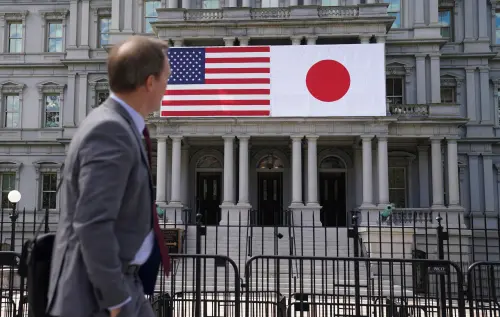The USA became a “Central Asian power” in 2001—unexpectedly, abruptly, and irreversibly. The strategic importance of the two small American military facilities that were based in Uzbekistan and Kyrgyzstan from the fall of 2001 was underscored Secretary of Defense Donald Rumsfeld’s visit to Tashkent on 23-24 February, 2004, after which Uzbekistan was ranked by regional analysts as a new American “factual partner” in Central Asia. Negotiations in Uzbekistan were followed by a visit from Secretary of State Colin Powell to Pakistan on March 17, 2004, during the course of which Pakistan was labeled as one of the USA’s most important allies outside NATO. Washington is changing its attitudes vis-a-vis the region from sporadic spasms of military activities (as in Afghanistan) to a more systematic and traditionalistic power-projection. This prompts a question: will the other Central Asian powers—Russia historically, and China more recently—regard this as a challenge?
“Soviet Middle Asia” to Central Asia
During most of the 20th century, the vast territory between the Caspian Sea in the west and China in the east was part of the Russian Empire and the Soviet Union. There were a few archaic monarchic states in this region (Bukhara, Khiva, and Kokand); all three were conquered or dominated by imperial Russia and formally incorporated into the USSR during the early 1920s. The states which existed in the region were not nation-states but typical multi-ethnic feudal monarchies. Each state was based on control by a ruling group (dynasty) over a certain oasis or a group of oases surrounded on all sides by desert or mountains. The population of each oasis was usually ethnically mixed, as proximity to water was more of a determining migratory factor than the ethnicity of the ruler who controlled it. Local people did not have a notion of belonging to a nation; rather, “oasis thinking” served as a basis for their identity—a local and territorial identity rather than an ethnic and cultural one.
In the 1930s, the Soviet Bolsheviks, seemingly inspired by the Wilsonian idea of “self-determination of nations” and a desire to win support from the local populations, created five Union Republics in the region. They were based on the principal of ethnicity: Kazakhstan, Uzbekistan, Kyrgyzstan, Tajikistan, and Turkmenistan. These newly created Union Republics were part of the Soviet Union, though formally they had a right to leave the USSR and become independent states. Indeed, after the peaceful collapse of the Soviet Union in 1991, all five republics suddenly became independent states.
Largely inexperienced, they immediately entered the Commonwealth of Independent States (CIS). Created in the wake of the former Soviet Union, CIS was merely a loose international organization rather than a state-like confederation of the former Soviet republics. In 1992, four states of the former Soviet Middle Asia (Kazakhstan, Tajikistan, Uzbekistan, and Kyrgyzstan), together with Russia signed the “Treaty of Tashkent,” which provided a formal basis for deployment of Russian troops on their soil. Turkmenistan did not join the treaty. It declared neutrality (recognized by the United Nations) and opened its frontiers to its neighbors, dissolving its border-guard troops.

